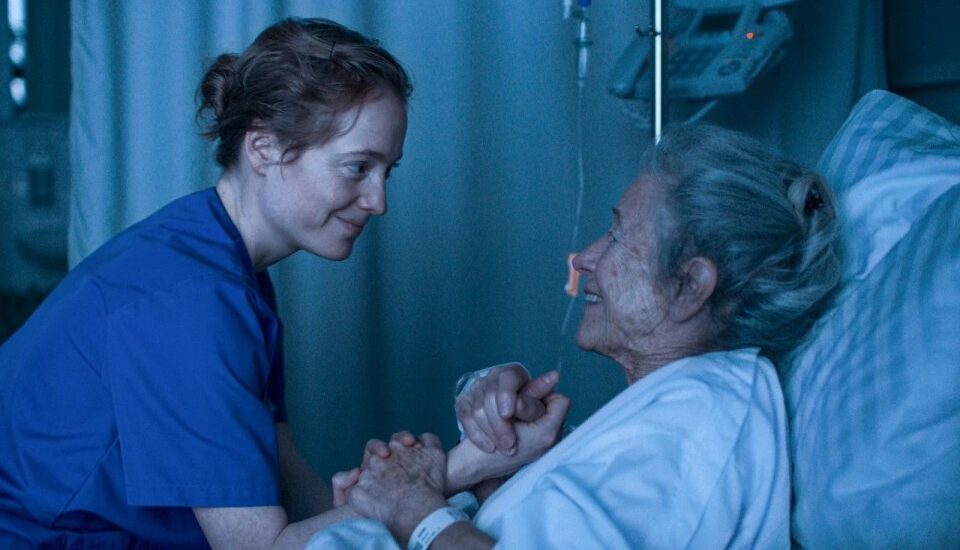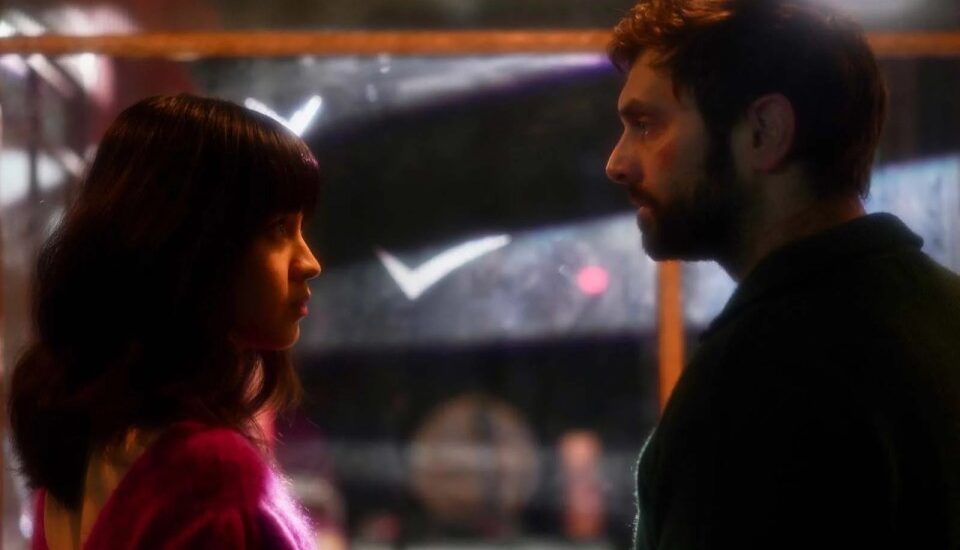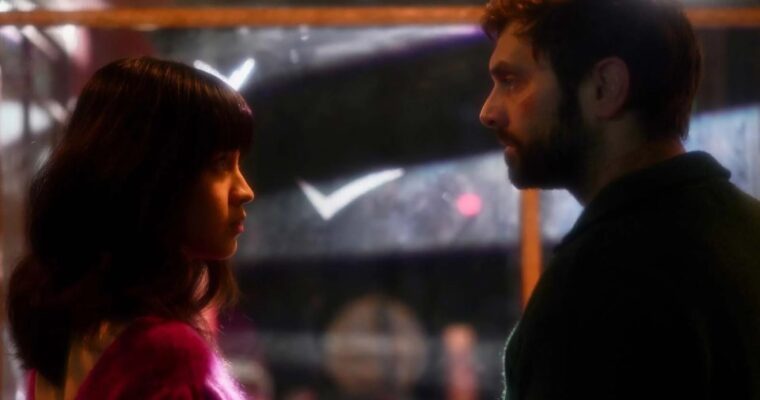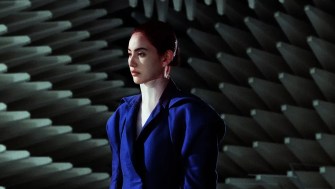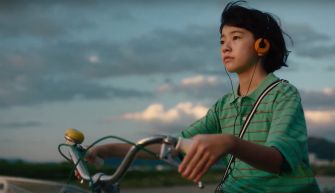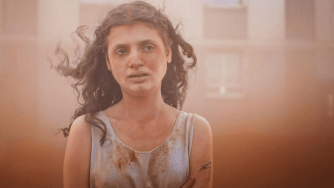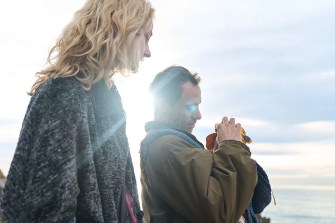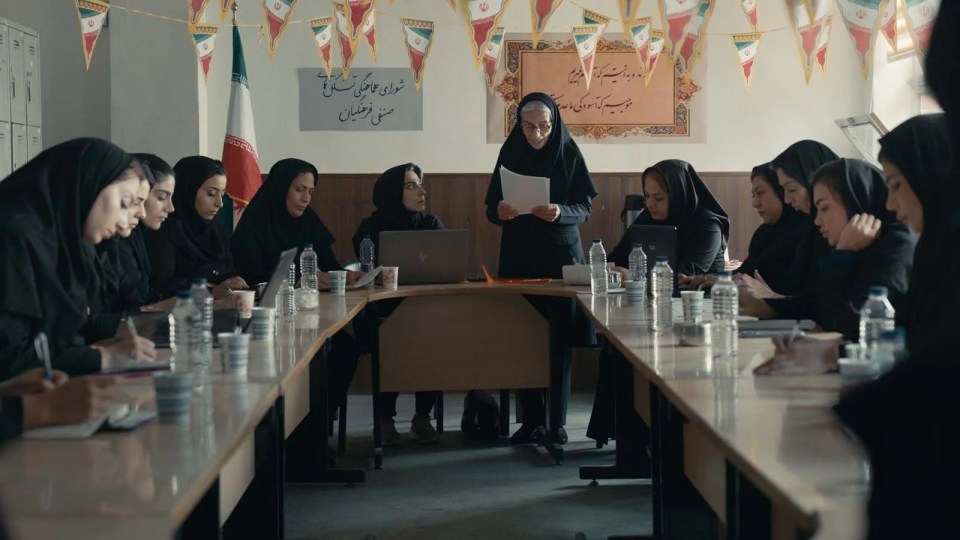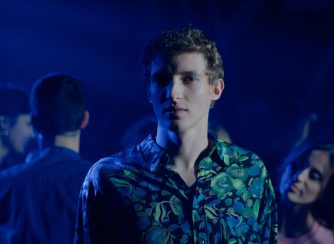THE WOMAN WHO KNEW TOO MUCH
In Iran, retired dance teacher Tarlan witnesses a murder committed by an influential government figure. She reports it to the police, who refuse to investigate. She must then choose between giving in to political pressure or risking her reputation and resources to seek justice.
Film Review
In 2023, Iranian artist Medhi Yarrahi released a song titled “Roosarito” in tribute to the death of student Jina Mahsa Amin, which sparked widespread Iranian protests in 2022. One of his verses included the following line: “ Take off your headscarf and uncover your hair, my love, don’t be afraid, laugh, protest against tears .”
The choice of this music during the credits of The Woman Who Knew Too Much encapsulates almost all of the work’s intentions. In the vein of protest Iranian cinema, Nader Saeivar’s film makes no secret of its anti-regime ambitions. The recent treatment inflicted on the Iranian population during the protests has deeply affected the country, a trauma that is now felt through a plurality of visual proposals, whether it is The Seeds of the Wild Fig Tree by Mohammad Rasoulof or the more similar Reading Lolita in Tehran by Eran Riklis. The stakes are similar in The Woman Who Knew Too Much , if the entire Iranian people suffer the pangs of an authoritarian theocracy, the first victims are above all women, the first oppressed by an anti-feminist society due to religious extremism.
Laugh, protest against tears
It is through the eyes of Tarlan (Maryam Boubani) that we follow his investigation into the murder of his spiritual daughter, Zara. A case whose ambiguity quickly diminishes to arrive at the ultimate conclusion, the crime is in reality a femicide perpetrated by her husband. The introduction, which opened with a dance scene in which the women filled the frame, gives way to the disappearance of one of them, an inevitable prelude to what will turn out to be a film that indicts the liberticidal measures imposed on the female segment of the nation. If the Iranian regime cannot eliminate women from existence, it seems to do everything to restrict them, as much their minds, their actions as their bodies .
So, from the very beginning, this innocuous act of dancing already seems to pose a problem, first and foremost for Zara’s husband, who seems at first obsessed by the image it sends of him before we understand that his concern is more despotic: through his dancing, his wife’s obedience escapes him. The film sometimes struggles to make dancing a truly political act (as did, in a different context, Taylor Hackford’s White Nights ), the sobriety of the looks and words is often enough to describe the real reasons for Zara’s death, while explaining the barriers that Tarlan faces in her quest for truth.
Anthem or riddle?
But while the feature film exalts the dignity of the victims, it tends to soften the protest charge of a revolt that the brutality of the regime would make almost inevitable. The choreographed conclusion unfolds like an invitation to pacifist activism, substituting an allegorical and poetic response for the armed response, where dance stands as a political instrument of resistance. This resolution, however, reveals a troubling ambivalence: the call for gentleness in the face of barbarity questions its true motives. Should we discern in it the desire to offer a reassuring and universally acceptable image of the struggle, or rather a sincere loyalty to forms of protest rooted in the daily experience of Iranian women?
This shift of the conflict towards the symbolic space of art thus opens a broader question: does it magnify the power of resistance by giving it an allegorical dimension, or does it water down its scope by neutralizing the harshness of a fight that the violence of the regime seems to condemn to confrontation? Between sublimation and attenuation, the choreographic gesture becomes both anthem and enigma, revealing the full complexity of the role of art in political struggles.
Beyond the symbolism of the dance, it is also seemingly insignificant gestures that provide a more direct window onto the ongoing authoritarianism; as when Zara’s husband closes the curtains to keep “his” wife(s) secret, or when Tarlan’s daughter, her face bruised and swollen from her husband’s blows, is reprimanded for not wearing the hijab. The work can sometimes seem timid, wrongly so, because it is by slowly letting the thread of the plot flow that the unbearable straitjacket experienced by Iranian women emerges. The political shenanigans, which prevent Tarlan from shedding light on his daughter’s murder, are only the exposed face of an oppressive architecture, destined to perpetuate it for as long as possible.
Some will say that current events are more than enough to realize the extent of the disaster that is Iran’s political regime, but all the works cited in this review gradually allow us to push back the boundaries of information, to make known internationally and without question, a context that seems like tyranny. There is no need to recall Rasoulof’s powerful gesture at the 2024 Cannes Film Festival to show how much this freedom of expression (and expansion) is dear to Iranian artists. Nader Saeivar also adds a new point of view to this national crisis, the character of Tarlan is a rarely used narrative vessel. Her age, her career as a former activist, her wrinkled features and her tired eyes are the face of a woman who can no longer take it, almost resigned in the face of an impossible struggle.
The Woman Who Knew Too Much is yet another look at increasingly fierce protests. While we may have once only seen these events through a small window, it seems clear that recent years have opened the door wide. As the end of the film suggests, perhaps one day this door will be more than a window of expression; it will then become the portal to freedom.
